Tara Chevrestt's Blog, page 4
March 15, 2020
The Mazarinette and the Musketeer-- Lesbian Swordswomen in Historical Adventure Novelette
This is a review of a book I read at the end of February and didn't have a chance to review in that short month.
So I came to a point when I really wanted ESCAPISM. The news was terrifying, and the last book I read was so dispiriting that I didn't want to promote it by putting my review on a blog. Fortunately, I had recently downloaded a free book from the author's website that was just the thing I needed.
It was The Mazarinette and the Musketeer by Heather Rose Jones. Jones says on her website that she wrote it in response to a challenge to create a musketeer story containing only female characters. I just love sword wielding women.
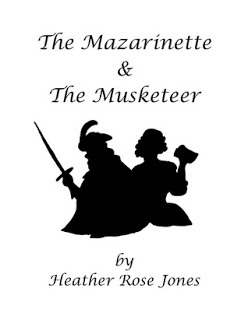 As a fan of Alexandre Dumas' musketeer novels, I already figured out that the Mazarinette must be one of the seven actual daughters of a real historical personage, the powerful minister of Louis XIII and Louis XIV, Cardinal Mazarin. See their Wikipedia article for further information. Jones says in her historical notes that the Mazarinettes really did wear the uniforms of their father's musketeers. The Mazarinette in this novelette was Hortense Mancini. I have copied a public domain painting of Hortense from her own Wikipedia article below.
As a fan of Alexandre Dumas' musketeer novels, I already figured out that the Mazarinette must be one of the seven actual daughters of a real historical personage, the powerful minister of Louis XIII and Louis XIV, Cardinal Mazarin. See their Wikipedia article for further information. Jones says in her historical notes that the Mazarinettes really did wear the uniforms of their father's musketeers. The Mazarinette in this novelette was Hortense Mancini. I have copied a public domain painting of Hortense from her own Wikipedia article below.
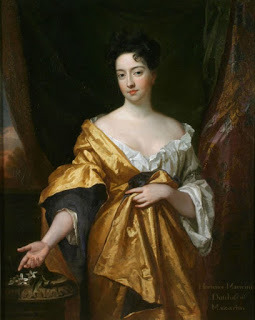
There were other real women among the characters in The Mazarinette and the Musketeer. It does seem likely that Anne Lennard, Countess of Sussex, did have a lesbian relationship with Hortense Mancini as portrayed in Jones' tale. Julie d'Aubigny, who appears in The Mazarinette and the Musketeer as a teenager, was the subject of a number of fictional accounts about her during her lifetime. It's difficult to know what's true and what isn't. She was supposed to have traveled with her fencing master doing sword fighting exhibitions. Finally, Aphra Behn was the first woman to have earned her living writing plays. She also really was a spy for King Charles II of England as shown by Jones in this novelette. She's one of my favorite historical personages and I find it impossible to pass up a book that contains her as a character.
The Mazarinette and the Musketeer was as entertaining as I expected with lots of sword fights and women disguised as men. I thought that the female characters were all delightful. This is my idea of a fun read.
So I came to a point when I really wanted ESCAPISM. The news was terrifying, and the last book I read was so dispiriting that I didn't want to promote it by putting my review on a blog. Fortunately, I had recently downloaded a free book from the author's website that was just the thing I needed.
It was The Mazarinette and the Musketeer by Heather Rose Jones. Jones says on her website that she wrote it in response to a challenge to create a musketeer story containing only female characters. I just love sword wielding women.
 As a fan of Alexandre Dumas' musketeer novels, I already figured out that the Mazarinette must be one of the seven actual daughters of a real historical personage, the powerful minister of Louis XIII and Louis XIV, Cardinal Mazarin. See their Wikipedia article for further information. Jones says in her historical notes that the Mazarinettes really did wear the uniforms of their father's musketeers. The Mazarinette in this novelette was Hortense Mancini. I have copied a public domain painting of Hortense from her own Wikipedia article below.
As a fan of Alexandre Dumas' musketeer novels, I already figured out that the Mazarinette must be one of the seven actual daughters of a real historical personage, the powerful minister of Louis XIII and Louis XIV, Cardinal Mazarin. See their Wikipedia article for further information. Jones says in her historical notes that the Mazarinettes really did wear the uniforms of their father's musketeers. The Mazarinette in this novelette was Hortense Mancini. I have copied a public domain painting of Hortense from her own Wikipedia article below.
There were other real women among the characters in The Mazarinette and the Musketeer. It does seem likely that Anne Lennard, Countess of Sussex, did have a lesbian relationship with Hortense Mancini as portrayed in Jones' tale. Julie d'Aubigny, who appears in The Mazarinette and the Musketeer as a teenager, was the subject of a number of fictional accounts about her during her lifetime. It's difficult to know what's true and what isn't. She was supposed to have traveled with her fencing master doing sword fighting exhibitions. Finally, Aphra Behn was the first woman to have earned her living writing plays. She also really was a spy for King Charles II of England as shown by Jones in this novelette. She's one of my favorite historical personages and I find it impossible to pass up a book that contains her as a character.
The Mazarinette and the Musketeer was as entertaining as I expected with lots of sword fights and women disguised as men. I thought that the female characters were all delightful. This is my idea of a fun read.
Published on March 15, 2020 15:02
March 14, 2020
The Girl Puzzle: A Very Humanized Nellie Bly
When the Goodreads group Historical Fictionistas decided to allow authors that are active members of the group to nominate their own novels for the March Book of the Month, it had been some time since they had last allowed author members to do this. The normal rule of the group is that authors can't nominate their own books. This is a common rule among Goodreads groups.
I was delighted when Kate Braithwaite nominated her Nellie Bly novel, The Girl Puzzle. I quickly seconded the nomination, and it won. I had already purchased it on Amazon a while back, but hadn't had an opportunity to get to it. It's nice to be able to read more historical fiction with strong woman protagonists during Women's History Month. This means I can provide more reviews than usual for Flying High Reviews.
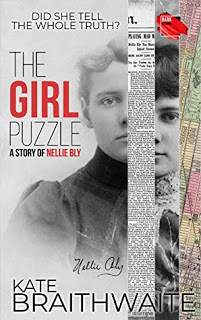
I had actually read a novel focusing on patients at the asylum where journalist Nellie Bly did a ten day undercover investigation pretending to have amnesia in 1887. That book was A Different Kind of Angel by Paulette Mahurin. It was the best historical fiction that I read in 2018 and I reviewed it here.
The asylum was located on what was then called Blackwell's Island which is in New York's East River. It was re-named Roosevelt Island in 1973. If you're interested in more information about the island's history, see its Wikipedia article here.
In comparing the two books I've read dealing with this late 19th century asylum, I feel that Mahurin's novel was very different in its orientation toward the patients. The fictional protagonist in A Different Kind of Angel was a refugee who was committed to that institution for not being able to speak English. She clearly didn't belong there. She encountered other patients who were also unjustly consigned to the asylum. This protagonist brought definitions of "sanity" into question. In The Girl Puzzle, Nellie Bly thought that a couple of patients didn't belong there, but the behavior of one patient and the history of the other caused Nellie to doubt her judgment. So it was unclear whether any of these women were committed without justification. It seemed to me that Braithwaite was coming down on the side of compassionate Dr. Ingram who said it was "a complicated issue". This positively portrayed asylum staff member commented to Nellie that patients could appear sane when they weren't.
It's important for me to add that all the rest of the asylum staff other than Dr. Ingram were portrayed by Braithwaite as either extremely abusive, or arrogant and uncaring. In her author's note called "Fact and Fiction in The Girl Puzzle" she reveals that the staff shown in her novel are all real individuals given their actual names, and that their behavior toward the patients is based on fact. There was a grand jury investigation of this institution after the Nellie Bly exposé , and this too is in the public record.
Another aspect of The Girl Puzzle that makes it dis-similar to A Different Kind of Angel is that it's dual period. There is a narrator in Braithwaite's book who was Nellie Bly's secretary toward the end of her life. This narrative displays the elderly Nellie Bly as having poor judgment. Nellie Bly's secretary admired her employer for her courage and past achievements, but she acknowledged that this feminist heroine had flaws. In the 1887 narrative, Nellie Bly herself experienced moments of angst in which she wondered if she had taken too great a risk when she accepted her undercover assignment.
I would consider Braithwaite's approach to her protagonist realistic. She shows us a Nellie Bly who is strong when the situation calls for it, but is also very human. This makes The Girl Puzzle vastly superior to a Nellie Bly mystery that I DNFed because she never doubted herself , and kept on repeating the same errors. Mystery fans call such characters TSTL (Too Stupid To Live). That's why I recommend this novel by Braithwaite to readers who want believable female protagonists.
I was delighted when Kate Braithwaite nominated her Nellie Bly novel, The Girl Puzzle. I quickly seconded the nomination, and it won. I had already purchased it on Amazon a while back, but hadn't had an opportunity to get to it. It's nice to be able to read more historical fiction with strong woman protagonists during Women's History Month. This means I can provide more reviews than usual for Flying High Reviews.

I had actually read a novel focusing on patients at the asylum where journalist Nellie Bly did a ten day undercover investigation pretending to have amnesia in 1887. That book was A Different Kind of Angel by Paulette Mahurin. It was the best historical fiction that I read in 2018 and I reviewed it here.
The asylum was located on what was then called Blackwell's Island which is in New York's East River. It was re-named Roosevelt Island in 1973. If you're interested in more information about the island's history, see its Wikipedia article here.
In comparing the two books I've read dealing with this late 19th century asylum, I feel that Mahurin's novel was very different in its orientation toward the patients. The fictional protagonist in A Different Kind of Angel was a refugee who was committed to that institution for not being able to speak English. She clearly didn't belong there. She encountered other patients who were also unjustly consigned to the asylum. This protagonist brought definitions of "sanity" into question. In The Girl Puzzle, Nellie Bly thought that a couple of patients didn't belong there, but the behavior of one patient and the history of the other caused Nellie to doubt her judgment. So it was unclear whether any of these women were committed without justification. It seemed to me that Braithwaite was coming down on the side of compassionate Dr. Ingram who said it was "a complicated issue". This positively portrayed asylum staff member commented to Nellie that patients could appear sane when they weren't.
It's important for me to add that all the rest of the asylum staff other than Dr. Ingram were portrayed by Braithwaite as either extremely abusive, or arrogant and uncaring. In her author's note called "Fact and Fiction in The Girl Puzzle" she reveals that the staff shown in her novel are all real individuals given their actual names, and that their behavior toward the patients is based on fact. There was a grand jury investigation of this institution after the Nellie Bly exposé , and this too is in the public record.
Another aspect of The Girl Puzzle that makes it dis-similar to A Different Kind of Angel is that it's dual period. There is a narrator in Braithwaite's book who was Nellie Bly's secretary toward the end of her life. This narrative displays the elderly Nellie Bly as having poor judgment. Nellie Bly's secretary admired her employer for her courage and past achievements, but she acknowledged that this feminist heroine had flaws. In the 1887 narrative, Nellie Bly herself experienced moments of angst in which she wondered if she had taken too great a risk when she accepted her undercover assignment.
I would consider Braithwaite's approach to her protagonist realistic. She shows us a Nellie Bly who is strong when the situation calls for it, but is also very human. This makes The Girl Puzzle vastly superior to a Nellie Bly mystery that I DNFed because she never doubted herself , and kept on repeating the same errors. Mystery fans call such characters TSTL (Too Stupid To Live). That's why I recommend this novel by Braithwaite to readers who want believable female protagonists.
Published on March 14, 2020 15:01
March 10, 2020
The Tubman Command: "I Got An Insurrection To Plan." Harriet Tubman
When I read She Came to Slay, Erica Armstrong Dunbar's biography of Harriet Tubman for Black History Month, I learned about Tubman's great military achievement, the Combahee River Raid (1863). There is a non-fiction book about it listed in Dunbar's bibliography, but I was unable to obtain it through libraries, and purchasing it was beyond my current means. So when I was asked to list books that I'm reading for Women's History Month on a Goodreads group called Read Women, I selected a historical novel about the Combahee River Raid, The Tubman Command by Elizabeth Cobbs, as one of them.
I am particularly pleased to be reviewing a book about Harriet Tubman today because March 10 is the day assigned to Tubman in The Little Book of Feminist Saints by Julia Pierpont.
I read both history and historical fiction. I feel that each of them have their strengths. I was looking forward to getting a window into the mind of Harriet Tubman, and feeling the impact of her leadership role in a Civil War military operation through the pages of The Tubman Command.
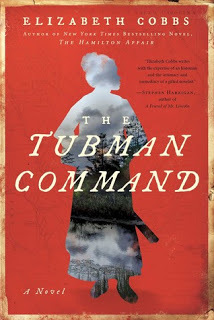
Harriet Tubman was clearly a born leader who had a talent for planning and was a gifted speaker. She was also determined to achieve her goals, had tremendous courage and believed strongly that the visions she received were messages from God. Elizabeth Cobbs portrays her as a character with these traits, but also shows us her vulnerable side as a woman who wanted a relationship with a man. Her Tubman seemed wary of trusting men on an intimate level. Based on what I read about her in She Came To Slay, I think she had good reason to be untrusting.
A romantic possibility for Tubman is a sub-plot in The Tubman Command, but it isn't a major focus of the narrative. So I wouldn't call this a romance. It's mainly about a historic military operation that resulted in the rescue of 750 slaves.
The quote from Harriet Tubman in the title of this review is a fictional one from this novel. Harriet Tubman was illiterate. So she herself wrote no accounts of her life.
The Combahee River Raid was made possible because of Harriet Tubman's status as the leader of a team of Black scouts for the Union Army. The Tubman Command shows how Tubman persuaded the officers involved in decision making to support her plan. I felt that there was a great deal of suspense involved in its implementation even though I already knew the result.
In the midst of all this drama, there was also comic relief in the form of an unexpectedly funny scene involving the antics of Tubman's cat, who was appropriately named Trouble. I was charmed by this scene and was glad it was there.
The fictional elements of The Tubman Command didn't cause me to lose confidence in Cobbs' accuracy. There is a back cover blurb praising this book from Edda L. Fields-Black, an African American academic who has been working on a scholarly book about the Combahee River Raid that is forthcoming.
I found The Tubman Command moving, insightful and well-written. I thought it was also original because I had never read a novel dealing with this significant event. This is my first five star read of 2020. It will certainly be a candidate for my top ten of the year.
I am particularly pleased to be reviewing a book about Harriet Tubman today because March 10 is the day assigned to Tubman in The Little Book of Feminist Saints by Julia Pierpont.
I read both history and historical fiction. I feel that each of them have their strengths. I was looking forward to getting a window into the mind of Harriet Tubman, and feeling the impact of her leadership role in a Civil War military operation through the pages of The Tubman Command.

Harriet Tubman was clearly a born leader who had a talent for planning and was a gifted speaker. She was also determined to achieve her goals, had tremendous courage and believed strongly that the visions she received were messages from God. Elizabeth Cobbs portrays her as a character with these traits, but also shows us her vulnerable side as a woman who wanted a relationship with a man. Her Tubman seemed wary of trusting men on an intimate level. Based on what I read about her in She Came To Slay, I think she had good reason to be untrusting.
A romantic possibility for Tubman is a sub-plot in The Tubman Command, but it isn't a major focus of the narrative. So I wouldn't call this a romance. It's mainly about a historic military operation that resulted in the rescue of 750 slaves.
The quote from Harriet Tubman in the title of this review is a fictional one from this novel. Harriet Tubman was illiterate. So she herself wrote no accounts of her life.
The Combahee River Raid was made possible because of Harriet Tubman's status as the leader of a team of Black scouts for the Union Army. The Tubman Command shows how Tubman persuaded the officers involved in decision making to support her plan. I felt that there was a great deal of suspense involved in its implementation even though I already knew the result.
In the midst of all this drama, there was also comic relief in the form of an unexpectedly funny scene involving the antics of Tubman's cat, who was appropriately named Trouble. I was charmed by this scene and was glad it was there.
The fictional elements of The Tubman Command didn't cause me to lose confidence in Cobbs' accuracy. There is a back cover blurb praising this book from Edda L. Fields-Black, an African American academic who has been working on a scholarly book about the Combahee River Raid that is forthcoming.
I found The Tubman Command moving, insightful and well-written. I thought it was also original because I had never read a novel dealing with this significant event. This is my first five star read of 2020. It will certainly be a candidate for my top ten of the year.
Published on March 10, 2020 22:32
February 22, 2020
Silhouette of a Sparrow: YA Lesbian Historical Novel About Following Dreams
I don't know what led me to Silhouette of a Sparrow, the only YA novel by children's fiction writer, Molly Beth Griffin. It is a book that I needed to read. So whatever the source was, I'm grateful to have discovered it.
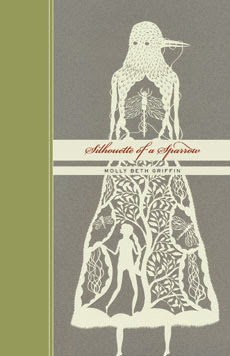
I must have been drawn to this book by the cover which is quite extraordinary resembling some prehistorical image of a bird woman rooted in nature. Then I must have read the description which identified it as taking place in the Roaring 1920's, a favorite period of mine which began exactly a hundred years ago. The fact that Garnet Richardson, the 16 year old female protagonist, loves birds and wants to become an ornithologist made the novel seem unusual and intriguing. This aspect of the book also was appealing to me as someone who is concerned about the non-human species with which we share our planet.
It belongs on this blog because there are strong women who assist Garnet in recognizing that she has the right to claim a future for herself.
The most significant of these women is 18 year old Isabella, the courageous dance hall performer labeled as a "harlot". Isabella knew that she had to dance, and that if she had to break society's rules to do that, so be it.
Other women who helped to change the way Garnet thought about her life were Miss Maple, her summer employer, and her unconventional Aunt Rachel who never actually appears in the narrative. Both of them served as examples that caused Garnet to realize that a woman could choose not to marry.
This is also a lesbian romance, but not one with a traditional HEA ending. I felt that the relationship between Garnet and Isabella had emotional intensity despite its brevity. Would they ever come back together? It's a possibility. The future of these fictional characters is unknown unless Molly Beth Griffin chooses to revisit their lives in another book. Without that sequel, Garnet and Isabella remain frozen for us at the point where the author left them behind in the summer of 1926.
The advantage of never advancing this narrative beyond 1926 is that Garnet can retain the optimism for which the Roaring Twenties are known in order to inspire other readers of Silhouette of a Sparrow as I have been.

I must have been drawn to this book by the cover which is quite extraordinary resembling some prehistorical image of a bird woman rooted in nature. Then I must have read the description which identified it as taking place in the Roaring 1920's, a favorite period of mine which began exactly a hundred years ago. The fact that Garnet Richardson, the 16 year old female protagonist, loves birds and wants to become an ornithologist made the novel seem unusual and intriguing. This aspect of the book also was appealing to me as someone who is concerned about the non-human species with which we share our planet.
It belongs on this blog because there are strong women who assist Garnet in recognizing that she has the right to claim a future for herself.
The most significant of these women is 18 year old Isabella, the courageous dance hall performer labeled as a "harlot". Isabella knew that she had to dance, and that if she had to break society's rules to do that, so be it.
Other women who helped to change the way Garnet thought about her life were Miss Maple, her summer employer, and her unconventional Aunt Rachel who never actually appears in the narrative. Both of them served as examples that caused Garnet to realize that a woman could choose not to marry.
This is also a lesbian romance, but not one with a traditional HEA ending. I felt that the relationship between Garnet and Isabella had emotional intensity despite its brevity. Would they ever come back together? It's a possibility. The future of these fictional characters is unknown unless Molly Beth Griffin chooses to revisit their lives in another book. Without that sequel, Garnet and Isabella remain frozen for us at the point where the author left them behind in the summer of 1926.
The advantage of never advancing this narrative beyond 1926 is that Garnet can retain the optimism for which the Roaring Twenties are known in order to inspire other readers of Silhouette of a Sparrow as I have been.
Published on February 22, 2020 23:06
January 27, 2020
The Girls With No Names: Historical Novel About Wayward Girls
The Girls With No Names by Serena Burdick is the first book I've read that was published in 2020. It's also my first digital review copy from Net Galley of the year. I noticed a similarity to Before We Were Yours by Lisa Wingate which I liked very much and reviewed here. I was also drawn to Burdick's novel because it takes place in Inwood, a Manhattan neighborhood where I lived for four years in the late 20th century (though I should point out that the book takes place in the early 20th century.) Yet it was the reference to suffragettes and in the Goodreads description and the reference to the Triangle Shirtwaist Factory fire in the publisher's publicity which caused me to decide that I needed to review it for this blog. It sounded like this novel could be a locus for intersecting feminist concerns. So I accepted the publisher's request. My honest reactions to The Girls With No Names can be found in this review.
Although the main protagonists are teens, I wouldn't describe The Girls With No Names as a YA novel. This book deals with the girls' coming of age under dire circumstances which involve mature themes that may be disturbing to some readers.
I found thirteen year old Effie remarkably brave when she comes to believe that she needs to rescue her sister from an institution with a rather horrific reputation called the House of Mercy.
I was also impressed with a girl that Effie encounters at the House of Mercy known as Mable. Mable's tragic experiences before her arrival at this home for wayward girls are portrayed movingly in flashback chapters.
The Girls With No Names turned out not to have a primary focus on women's suffrage. Still, the book does include a real suffragette who is a minor character playing a pivotal role. Her name is Inez Milholland. I've linked her Wikipedia article because I think readers might want to know more about this woman activist. Milholland's Wikipedia article includes a public domain photo of her which I am reproducing below:
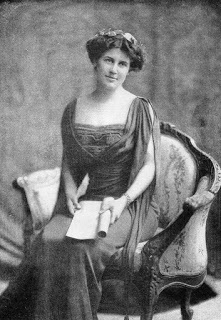
There are Romanii characters in The Girls With No Names. Burdick tells us in her Afterword that they are called gypsies in the first person narratives taking place in 1913 in order to be consistent with usage in that period. She is aware that Romani consider "gypsy" offensive, but Burdick isn't trying to offend. She just wants to be historically accurate. I was fascinated to learn from the Afterword that Burdick had discovered from her research that Romani really had camped in the Inwood area during this period.
I mostly liked the way the Romani were shown, but I did think that one element in their portrayal was anachronistic. Effie got a Tarot reading at their camp which she regarded as significant. The interpretation of the cards that appeared in the reading was similar to current day Neo Pagan Tarot readers. So I considered it doubtful that an early 20th century Romani would approach the cards that way.
Despite the critical comment in the above paragraph, I identified with both Effie and Mable and considered The Girls With No Names a powerful work of fiction.
Although the main protagonists are teens, I wouldn't describe The Girls With No Names as a YA novel. This book deals with the girls' coming of age under dire circumstances which involve mature themes that may be disturbing to some readers.
I found thirteen year old Effie remarkably brave when she comes to believe that she needs to rescue her sister from an institution with a rather horrific reputation called the House of Mercy.
I was also impressed with a girl that Effie encounters at the House of Mercy known as Mable. Mable's tragic experiences before her arrival at this home for wayward girls are portrayed movingly in flashback chapters.
The Girls With No Names turned out not to have a primary focus on women's suffrage. Still, the book does include a real suffragette who is a minor character playing a pivotal role. Her name is Inez Milholland. I've linked her Wikipedia article because I think readers might want to know more about this woman activist. Milholland's Wikipedia article includes a public domain photo of her which I am reproducing below:

There are Romanii characters in The Girls With No Names. Burdick tells us in her Afterword that they are called gypsies in the first person narratives taking place in 1913 in order to be consistent with usage in that period. She is aware that Romani consider "gypsy" offensive, but Burdick isn't trying to offend. She just wants to be historically accurate. I was fascinated to learn from the Afterword that Burdick had discovered from her research that Romani really had camped in the Inwood area during this period.
I mostly liked the way the Romani were shown, but I did think that one element in their portrayal was anachronistic. Effie got a Tarot reading at their camp which she regarded as significant. The interpretation of the cards that appeared in the reading was similar to current day Neo Pagan Tarot readers. So I considered it doubtful that an early 20th century Romani would approach the cards that way.
Despite the critical comment in the above paragraph, I identified with both Effie and Mable and considered The Girls With No Names a powerful work of fiction.
Published on January 27, 2020 00:42
December 15, 2019
The Kill Club: Blog Tour and Review
I'd read a description of The Kill Club by Wendy Heard before the publisher offered me the opportunity to join the blog tour for this highly immersive crime thriller. I'm not someone who enjoys books that are terrifying. Yet an organization devoted to providing justice for victims of abuse is right up my alley even though a journey down that alley could haunt my nights. Was I ready for this? I wasn't entirely certain when I downloaded my review copy from Net Galley.

All doubts vanished when I was introduced to the protagonist, Jasmine Benavides. I'd read that Wendy Heard is the co-host of a podcast called Unlikeable Female Characters. If the author intended Jasmine to be such a character, I have to say that she failed completely. I absolutely loved Jasmine from the start--long before I really got to know her. I had to discover more about this brave survivor of abuse who will not rest until her thirteen year old brother is also freed from the domination of their nightmarish foster mother, Carol Coleman.
Some might say that I'm perpetrating a spoiler when I reveal that Jasmine is a lesbian. Other reviewers have already outed Jasmine, and I feel that mentioning her sexuality is helping the book reach its audience--the readers who need to see bold lesbian action heroes in their thrillers.
Jasmine is also very human. She makes mistakes. A few of them have had terrible consequences, and she doesn't forgive herself for them. Admittedly, Jasmine has an overly active conscience. So she also blames herself for disasters that weren't her fault. Yes, Jasmine is an angst queen. I actually admire angsty characters. Protagonists who take responsibility for their actions are far more worthy of respect than those who self-righteously refuse to accept that they've ever harmed anyone. People in the second category are usually villains. Carol Coleman would be an example of that type of individual.
There were surprising twists in The Kill Club, but there were also a few that I found predictable. Even though I sometimes knew what was going to happen next, I was still totally involved in the plot. I was so invested in Jasmine as a character that I felt that I had become part of her world. I would find myself thinking about where the narrative was headed when I was doing other things. This doesn't happen to me very often.
I did have one problem. I felt that a police detective was portrayed in a pivotal scene as being less competent with a gun than I would expect of an experienced officer. That character's credibility as a detective was compromised. This wasn't a minor glitch, and it's the reason why I can't give The Kill Club five stars on Goodreads.
Despite the above criticism, the suspense was first rate and the characterization of Jasmine as a powerful yet vulnerable protagonist is what really makes The Kill Club by Wendy Heard well worth reading.
 Wendy Heard
Wendy Heard
photo courtesy of MIRA

All doubts vanished when I was introduced to the protagonist, Jasmine Benavides. I'd read that Wendy Heard is the co-host of a podcast called Unlikeable Female Characters. If the author intended Jasmine to be such a character, I have to say that she failed completely. I absolutely loved Jasmine from the start--long before I really got to know her. I had to discover more about this brave survivor of abuse who will not rest until her thirteen year old brother is also freed from the domination of their nightmarish foster mother, Carol Coleman.
Some might say that I'm perpetrating a spoiler when I reveal that Jasmine is a lesbian. Other reviewers have already outed Jasmine, and I feel that mentioning her sexuality is helping the book reach its audience--the readers who need to see bold lesbian action heroes in their thrillers.
Jasmine is also very human. She makes mistakes. A few of them have had terrible consequences, and she doesn't forgive herself for them. Admittedly, Jasmine has an overly active conscience. So she also blames herself for disasters that weren't her fault. Yes, Jasmine is an angst queen. I actually admire angsty characters. Protagonists who take responsibility for their actions are far more worthy of respect than those who self-righteously refuse to accept that they've ever harmed anyone. People in the second category are usually villains. Carol Coleman would be an example of that type of individual.
There were surprising twists in The Kill Club, but there were also a few that I found predictable. Even though I sometimes knew what was going to happen next, I was still totally involved in the plot. I was so invested in Jasmine as a character that I felt that I had become part of her world. I would find myself thinking about where the narrative was headed when I was doing other things. This doesn't happen to me very often.
I did have one problem. I felt that a police detective was portrayed in a pivotal scene as being less competent with a gun than I would expect of an experienced officer. That character's credibility as a detective was compromised. This wasn't a minor glitch, and it's the reason why I can't give The Kill Club five stars on Goodreads.
Despite the above criticism, the suspense was first rate and the characterization of Jasmine as a powerful yet vulnerable protagonist is what really makes The Kill Club by Wendy Heard well worth reading.
 Wendy Heard
Wendy Heardphoto courtesy of MIRA
Published on December 15, 2019 00:00
November 29, 2019
The Mozart Conspiracy: A Girl Violinist Investigates in 18th Century Vienna
The Mozart Conspiracy by Susanne Dunlap is the sequel to a YA historical mystery that I really liked called The Musician's Daughter in which fictional fifteen year old violinist Theresa Schurman investigated her father's death in 18th century Vienna. I wasn't aware that there was a sequel when The Mozart Conspiracy was originally published in 2010. I only found out about it now because the new Kindle edition is available on Net Galley. I snapped up the free digital review copy, and decided to read this mystery during Thanksgiving week because I felt thankful for it.

The first thing that readers considering a sequel generally want to know is whether it can stand alone. My answer is that you can start with The Mozart Conspiracy, but why would you want to do that? The Musician's Daughter is wonderful.
As my readers will know, women in the 18th century who had careers in the arts were rebelling against established conventions. Theresa was fortunate in having a violinist father who taught her and believed in her gift. This is believable because some prominent historical women in the arts and sciences of earlier eras were trained by their fathers. The ancient mathematician Hypatia and the Italian Baroque painter Artemisia Gentileschi spring to mind as examples. Theresa was even more fortunate in having the composer Joseph Haydn as her godfather and mentor. He is a significant character in The Musician's Daughter.
A Romani woman named Mirela played an important role in both the books that center on Theresa. Theresa relied on Mirela's insight and assistance. Theresa also had connections to Romani musicians that Haydn knew. (I found a section of the Wikipedia article on Haydn and Folk Music that deals with Haydn's relationship with the Romani and their influence on his music for those who are interested in this subject.)
Another female character in The Mozart Conspiracy that I wanted to bring up in this review was Constanze Weber, who later married Mozart. I've seen Constanze portrayed as self-centered, greedy and manipulative elsewhere. Dunlap shows her in a much more positive light. It seemed possible that Theresa and Constanze could become friends in the future.
The Theresa Schurman mysteries contain themes that are relevant to me. In The Mozart Conspiracy gender inequality and anti-semitism were the ones that I found most noteworthy. I felt Theresa's distress when she was viewed as anti-semitic by some of the Jewish characters.
The mystery aspect of the book was handled very suspensefully. The conspiracy referred to in the title of the novel remained unclear until the final reveal. Until then, it was difficult for Theresa to discover whodunit since it transpired that she couldn't be entirely certain about what was done.
Although I didn't like The Mozart Conspiracy nearly as much as The Musician's Daughter, I did enjoy reading it. Yet one area of disappointment was the absence of Haydn. If there is a third book in this series, I'd love to see Haydn resume his mentor role in Theresa's life.

The first thing that readers considering a sequel generally want to know is whether it can stand alone. My answer is that you can start with The Mozart Conspiracy, but why would you want to do that? The Musician's Daughter is wonderful.
As my readers will know, women in the 18th century who had careers in the arts were rebelling against established conventions. Theresa was fortunate in having a violinist father who taught her and believed in her gift. This is believable because some prominent historical women in the arts and sciences of earlier eras were trained by their fathers. The ancient mathematician Hypatia and the Italian Baroque painter Artemisia Gentileschi spring to mind as examples. Theresa was even more fortunate in having the composer Joseph Haydn as her godfather and mentor. He is a significant character in The Musician's Daughter.
A Romani woman named Mirela played an important role in both the books that center on Theresa. Theresa relied on Mirela's insight and assistance. Theresa also had connections to Romani musicians that Haydn knew. (I found a section of the Wikipedia article on Haydn and Folk Music that deals with Haydn's relationship with the Romani and their influence on his music for those who are interested in this subject.)
Another female character in The Mozart Conspiracy that I wanted to bring up in this review was Constanze Weber, who later married Mozart. I've seen Constanze portrayed as self-centered, greedy and manipulative elsewhere. Dunlap shows her in a much more positive light. It seemed possible that Theresa and Constanze could become friends in the future.
The Theresa Schurman mysteries contain themes that are relevant to me. In The Mozart Conspiracy gender inequality and anti-semitism were the ones that I found most noteworthy. I felt Theresa's distress when she was viewed as anti-semitic by some of the Jewish characters.
The mystery aspect of the book was handled very suspensefully. The conspiracy referred to in the title of the novel remained unclear until the final reveal. Until then, it was difficult for Theresa to discover whodunit since it transpired that she couldn't be entirely certain about what was done.
Although I didn't like The Mozart Conspiracy nearly as much as The Musician's Daughter, I did enjoy reading it. Yet one area of disappointment was the absence of Haydn. If there is a third book in this series, I'd love to see Haydn resume his mentor role in Theresa's life.
Published on November 29, 2019 22:44
October 3, 2019
The Light Over London: A WWII Novel of Romance, Secrets and Women's Autonomy
When a publicist pitches a book to me, the content of that pitch matters very much. I want it to pique my interest, but I also want it to accurately reflect the book. I should be made aware of what kind of book I'll be reading. I try to do that in my blog review titles, so that the book will find its audience.
It seems to me that advance publicity for The Light Over London by Julia Kelly is trying to appeal to the sort of reader who is interested in the combat aspect of WWII. There is an emphasis on the female historical protagonist joining an anti-aircraft unit and becoming a Gunner Girl. The sort of reader who is interested in reading about Gunner Girls will expect that a high percentage of the book will contain action scenes or will at least take place in a military context. I requested this book for review on the strength of that publicity and received a copy from the publisher via Net Galley.
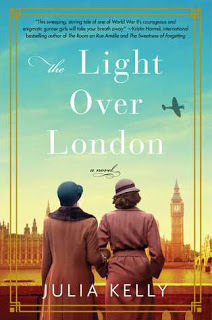
As I read Light Over London, I realized that I had to adjust my expectations. It was a good book, just not the one that I thought it would be. There was a combat sequence. There were also descriptions of training. Julia Kelly captured the bonding between the women in the anti-aircraft unit very well. Yet I'd estimate that the Gunner Girl experience represented about 10% of the book.
I think that the other 90% was what the novel really focused on. It was about the struggle of women to define themselves as individuals and live out their dreams. It was also about how family, or the men in their lives supported or hindered them. There were a number of female characters in The Light Over London who were strong women. They all went on to live the lives they chose for themselves. There were no relationships that involved a conventional romance genre HEA, but I think all these truly autonomous women found their own form of happiness.
There were a couple of major secrets. One was a devastating scandal that infested the heart of a romantic relationship. The other was a character building mistake that a family member made when she was young. Both women moved on, and didn't allow themselves to be crushed by circumstances. I have to say that I was able to predict the nature of these secrets before they were revealed based on what I knew about the people involved. So there were no surprises for me, but it was satisfying that I understood the characters so well.
I was glad to learn about the existence of Gunner Girls, and was delighted to find a novel like The Light Over London where all the major female characters were an inspiration.
It seems to me that advance publicity for The Light Over London by Julia Kelly is trying to appeal to the sort of reader who is interested in the combat aspect of WWII. There is an emphasis on the female historical protagonist joining an anti-aircraft unit and becoming a Gunner Girl. The sort of reader who is interested in reading about Gunner Girls will expect that a high percentage of the book will contain action scenes or will at least take place in a military context. I requested this book for review on the strength of that publicity and received a copy from the publisher via Net Galley.

As I read Light Over London, I realized that I had to adjust my expectations. It was a good book, just not the one that I thought it would be. There was a combat sequence. There were also descriptions of training. Julia Kelly captured the bonding between the women in the anti-aircraft unit very well. Yet I'd estimate that the Gunner Girl experience represented about 10% of the book.
I think that the other 90% was what the novel really focused on. It was about the struggle of women to define themselves as individuals and live out their dreams. It was also about how family, or the men in their lives supported or hindered them. There were a number of female characters in The Light Over London who were strong women. They all went on to live the lives they chose for themselves. There were no relationships that involved a conventional romance genre HEA, but I think all these truly autonomous women found their own form of happiness.
There were a couple of major secrets. One was a devastating scandal that infested the heart of a romantic relationship. The other was a character building mistake that a family member made when she was young. Both women moved on, and didn't allow themselves to be crushed by circumstances. I have to say that I was able to predict the nature of these secrets before they were revealed based on what I knew about the people involved. So there were no surprises for me, but it was satisfying that I understood the characters so well.
I was glad to learn about the existence of Gunner Girls, and was delighted to find a novel like The Light Over London where all the major female characters were an inspiration.
Published on October 03, 2019 21:05
September 11, 2019
Nexus: How Does A Strong Woman Deal With A Broken Man?
Nexus is a novella in the alternate history Roma Nova series by Alison Morton in which there is a matriarchal country whose citizens are the descendants of Pagan Romans that left Rome in ancient times. See my reviews of previous Roma Nova books Inceptio, Carina and Perfiditas which focus on the altered 21st century adventures of the maverick praetorian, Carina. The protagonist of Nexus is Carina's formidable grandmother, Aurelia. It takes place in the alternate 20th century between Aurelia and Insurrectio. My reviews of these Aurelia books are at the links I've provided. You can also find my review of Retalio, the sequel of Insurrectio on this blog here. The most recent book in this series that I've reviewed is Roma Nova Extra, an anthology of short stories taking place during a variety of historical periods.
Let's move on to the current review. Since Aurelia is my favorite of the two Roma Nova novel protagonists, I was delighted to be in her company again. This time it was in the newly written 1970's adventure, Nexus, provided by Alison Morton in advance of publication.
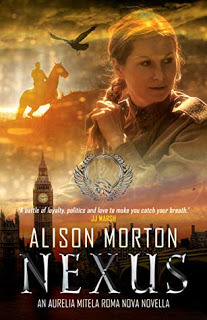
I'd like to emphasize that all the Roma Nova books are heavily plotted thrillers, but characterization is also an aspect of these books. Aurelia investigates a series of crimes in Nexus. Yet I feel that the central theme of this novella is character centered.
The broken man appears in several Roma Nova books. He's especially heart-wrenching to deal with when a protagonist has fallen in love with him. Yet there are other circumstances that may make a strong woman want to fix him. If he's young, she may feel protective toward him. Aurelia finds herself in this situation in Nexus.
Aurelia is a compassionate human being. People who run rough shod over others are usually insecure. It's only individuals who have a strong sense of themselves like Aurelia who can afford to be compassionate. This is a character trait that she shares with Miklos, the man she loves. Miklos and Aurelia's relationship with him play an important role in Nexus. Aurelia's choice of Miklos and the kind of relationship she has with him is another reason why I prefer her as a protagonist. I really like that Aurelia and Miklos respect each other's independence, and share the same values.
The ending of Nexus is tragic, but there is also a redemptive aspect that made it feel emotionally satisfying. I hope that Alison Morton will find other opportunities to write more Aurelia prequels.
Let's move on to the current review. Since Aurelia is my favorite of the two Roma Nova novel protagonists, I was delighted to be in her company again. This time it was in the newly written 1970's adventure, Nexus, provided by Alison Morton in advance of publication.

I'd like to emphasize that all the Roma Nova books are heavily plotted thrillers, but characterization is also an aspect of these books. Aurelia investigates a series of crimes in Nexus. Yet I feel that the central theme of this novella is character centered.
The broken man appears in several Roma Nova books. He's especially heart-wrenching to deal with when a protagonist has fallen in love with him. Yet there are other circumstances that may make a strong woman want to fix him. If he's young, she may feel protective toward him. Aurelia finds herself in this situation in Nexus.
Aurelia is a compassionate human being. People who run rough shod over others are usually insecure. It's only individuals who have a strong sense of themselves like Aurelia who can afford to be compassionate. This is a character trait that she shares with Miklos, the man she loves. Miklos and Aurelia's relationship with him play an important role in Nexus. Aurelia's choice of Miklos and the kind of relationship she has with him is another reason why I prefer her as a protagonist. I really like that Aurelia and Miklos respect each other's independence, and share the same values.
The ending of Nexus is tragic, but there is also a redemptive aspect that made it feel emotionally satisfying. I hope that Alison Morton will find other opportunities to write more Aurelia prequels.
Published on September 11, 2019 10:40
July 19, 2019
Dead Man's Jazz--Speakeasy Musicians Are Murdered in YA Mystery
Dead Man's Jazz is the second in a mystery series by Connie B. Dowell. I reviewed The Poison in All of Us, the first book in the series, here. I was looking forward to finding out how the small town Georgia teen investigators, Emmie and Dessa, would deal with crimes in the city of Savannah in 1919. So I pre-ordered it on Amazon and have finally gotten a chance to review it.
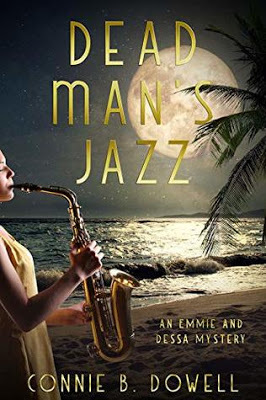
My main impetus for reading The Poison In All of Us was that the case dealt with suffragettes. There are suffragettes in this novel as well. I would have to say that this is necessarily so because Emmie's mother, Irene, is a dedicated suffragette. She decided to make the trip to Savannah in order to network with a Savannah suffragette leader. Emmie and Dessa came along because they were on summer vacation from school.
I feel that it's important to note that Dead Man's Jazz takes place during the Red Summer of 1919. This was exactly a hundred years ago, and involved a nationwide intensification of white supremacist violence in the United States. I found a relatively recent article about it from Teen Vogue here. Connie Dowell also discusses it in her Author's Note. Racism is a theme in Dead Man's Jazz, but it isn't the primary focus of the novel. Dowell says in the Author's Note that she didn't feel that she was the right person to write a book about Red Summer, but neither could she ignore the issue. Both Dessa and Irene take affirmative roles in trying to connect with and later assist the local African American Women's Club. (Though I do think it likely that it would have been called the Colored Women's Club in 1919. "Serial killer" was another example of anachronistic vocabulary in this novel. See Origin of the Term "Serial Killer" from Psychology Today.) The attitude of the white Savannah suffragette leader toward African American women seemed to imply that she firmly believed in segregation.
The case focused more on the band at a Savannah speakeasy. It was mentioned that though there was no national prohibition of alcohol at that point, Georgia was a dry state where alcohol was illegal. There were characters involved in bootlegging.
Another prominent issue was one involving the personal lives of a couple of the characters. In reviewing The Poison in All of Us, Dessa's sexual identity was a spoiler, but Dowell outs Dessa in the description for this book. So I guess it's appropriate for me to say in this review that there's lots of focus on lesbian relationship issues. Theresa, Dessa's former lover, is the catalyst for Dessa and Emmie to be involved in this case since Theresa is a musician in the speakeasy's band. I found Theresa very sympathetic. Her inner strength made her my favorite character in this book.
It did seem to me that Dessa was far more dramatically prominent in Dead Man's Jazz than Emmie. She was motivated by Theresa's involvement to take a more active role in the case and was going through a period of transition. Emmie seemed to me to be a relatively marginal character. I also found her less interesting than Theresa and Dessa, though I also very much liked Emmie's mother, Irene. There's a free prequel short story available to subscribers to Connie Dowell's newsletter in which Irene and her brother Charlie investigated a case when they were teens. It's called "Unwound" and there's a download link for it after the Author's Note. I think there's potential for an entire series about Irene and Charlie, but there's also potential for books focusing primarily on Dessa.
I was hoping for more focus on jazz in Dead Man's Jazz since so many of the characters were musicians, but music was relegated to the background. There were aspects of this book that I liked very much, but there were also parts of the narrative that I didn't find engaging. Yet I would definitely like to read more about some of these characters.

My main impetus for reading The Poison In All of Us was that the case dealt with suffragettes. There are suffragettes in this novel as well. I would have to say that this is necessarily so because Emmie's mother, Irene, is a dedicated suffragette. She decided to make the trip to Savannah in order to network with a Savannah suffragette leader. Emmie and Dessa came along because they were on summer vacation from school.
I feel that it's important to note that Dead Man's Jazz takes place during the Red Summer of 1919. This was exactly a hundred years ago, and involved a nationwide intensification of white supremacist violence in the United States. I found a relatively recent article about it from Teen Vogue here. Connie Dowell also discusses it in her Author's Note. Racism is a theme in Dead Man's Jazz, but it isn't the primary focus of the novel. Dowell says in the Author's Note that she didn't feel that she was the right person to write a book about Red Summer, but neither could she ignore the issue. Both Dessa and Irene take affirmative roles in trying to connect with and later assist the local African American Women's Club. (Though I do think it likely that it would have been called the Colored Women's Club in 1919. "Serial killer" was another example of anachronistic vocabulary in this novel. See Origin of the Term "Serial Killer" from Psychology Today.) The attitude of the white Savannah suffragette leader toward African American women seemed to imply that she firmly believed in segregation.
The case focused more on the band at a Savannah speakeasy. It was mentioned that though there was no national prohibition of alcohol at that point, Georgia was a dry state where alcohol was illegal. There were characters involved in bootlegging.
Another prominent issue was one involving the personal lives of a couple of the characters. In reviewing The Poison in All of Us, Dessa's sexual identity was a spoiler, but Dowell outs Dessa in the description for this book. So I guess it's appropriate for me to say in this review that there's lots of focus on lesbian relationship issues. Theresa, Dessa's former lover, is the catalyst for Dessa and Emmie to be involved in this case since Theresa is a musician in the speakeasy's band. I found Theresa very sympathetic. Her inner strength made her my favorite character in this book.
It did seem to me that Dessa was far more dramatically prominent in Dead Man's Jazz than Emmie. She was motivated by Theresa's involvement to take a more active role in the case and was going through a period of transition. Emmie seemed to me to be a relatively marginal character. I also found her less interesting than Theresa and Dessa, though I also very much liked Emmie's mother, Irene. There's a free prequel short story available to subscribers to Connie Dowell's newsletter in which Irene and her brother Charlie investigated a case when they were teens. It's called "Unwound" and there's a download link for it after the Author's Note. I think there's potential for an entire series about Irene and Charlie, but there's also potential for books focusing primarily on Dessa.
I was hoping for more focus on jazz in Dead Man's Jazz since so many of the characters were musicians, but music was relegated to the background. There were aspects of this book that I liked very much, but there were also parts of the narrative that I didn't find engaging. Yet I would definitely like to read more about some of these characters.
Published on July 19, 2019 15:59



